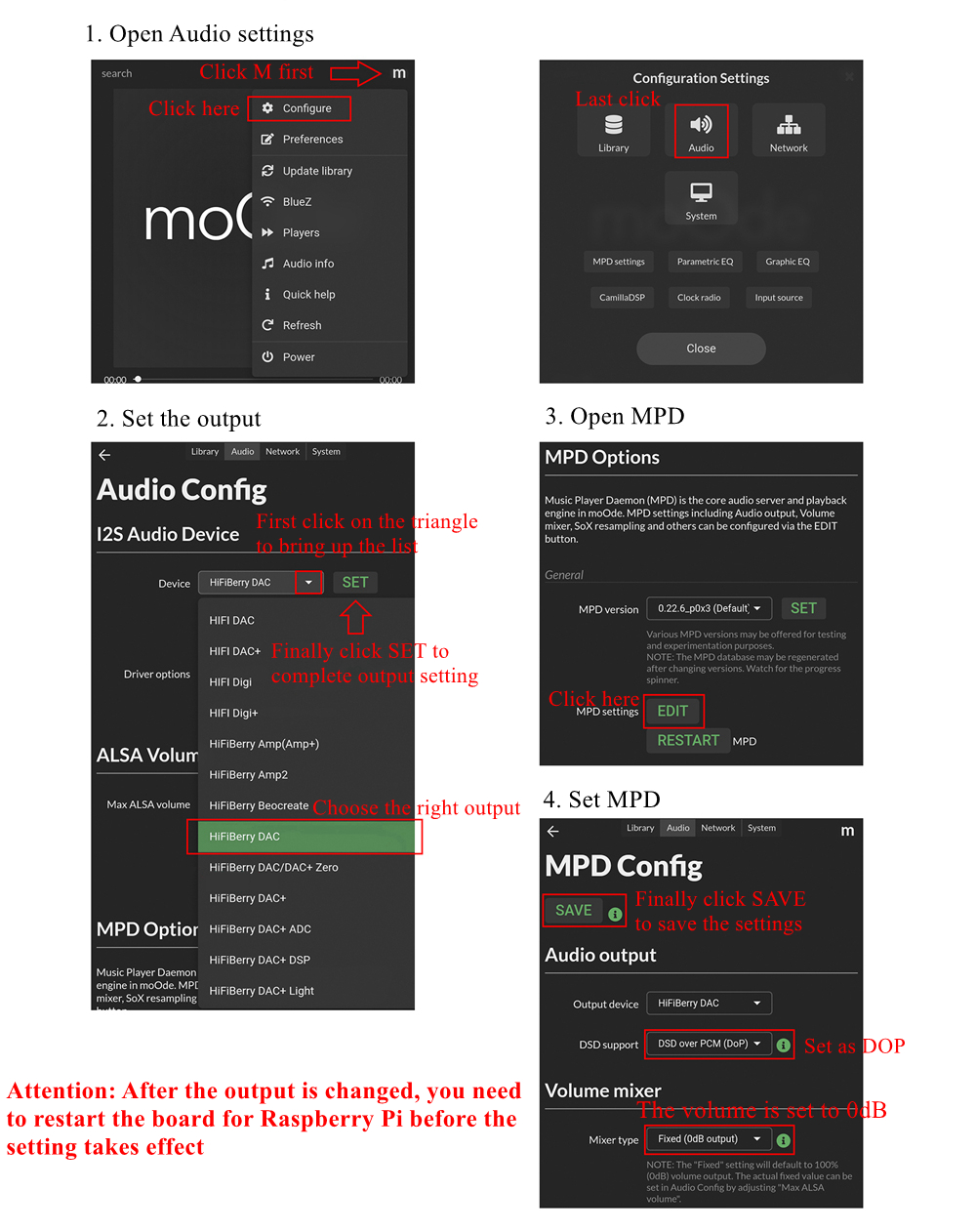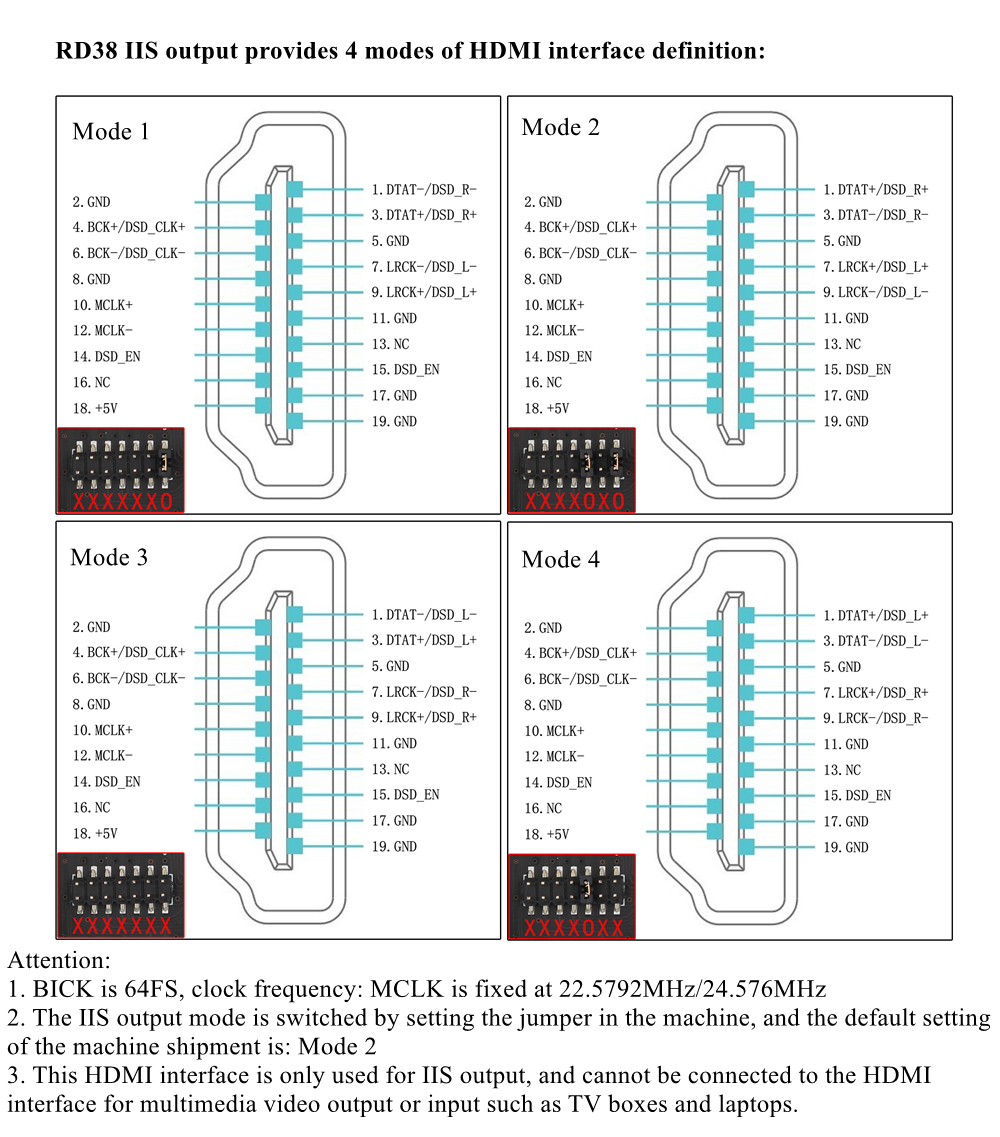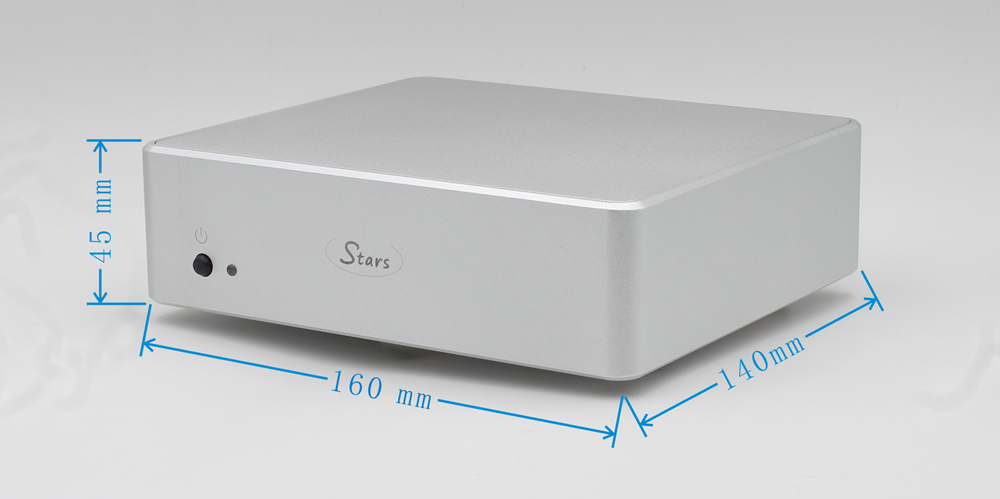
| Quantity | 3+ units | 10+ units | 30+ units | 50+ units | More |
|---|---|---|---|---|---|
| Price /Unit | $197.55 | $193.52 | $187.47 | $179.41 | Contact US |
Ustars Audio RD38 9038Q2M Network Player DAC Digital Player Without Main Board For Raspberry Pi
Read Before Purchasing:
- Hands-on ability and basic knowledge are needed for product installation and using.
- It requires main board for Raspberry Pi and related playing software to work normally. Only fits users for Raspberry Pi and related player software Volumio and Moode.
Features:
- Including DAC board, shell, 5V 2A power adapter
- Dual audio low phase noise crystal oscillator: Main board for Raspberry Pi does not have a dedicated audio clock crystal oscillator, and there is no MCLK output, which limits its output signal quality and application range. RD38 uses 2pcs audio dedicated low-phase noise crystal oscillator, 22.5792MHz/24.576MHz clock signal corresponds to 44.1KHz/48KHz fundamental frequency sampling for data reforming, deep optimization, making the sound more real and natural
- 2pcs ES9038Q2M decoder chip: ES9038Q2M is a new generation of flagship decoder chip with complete functions and supports DOP decoding. Compared with the previous ES9018, the sound is greatly improved, with high release force, large dynamics, wide sound field, pure and thick sound, and no harshness. More simulated
- Light touch switch and colorful indicator light: RD38 has a powerful and user-friendly power management function. A single touch switch can turn on/off, mute, and set IIS output mode. You can individually turn off the digital processing and DAC part of the power supply, retain the power supply for Raspberry Pi, and can also be set to turn on when the power is turned on or enter the standby state when the power is turned on . Press and hold the touch switch and then turn on the power of the host until the indicator light is on, then you can release it. The blue indicator light means power on. Red means power on and standby. Repeat the operation to complete the switch between the 2 power-on modes, and automatically save the settings after the operation is completed
- Powerful heat dissipation system: A specially made solid-core all-aluminum heat conduction rod can be directly connected to the CPU for Raspberry Pi 4B and the bottom of the chassis, transfer the heat generated by Pi to the bottom plate and the entire chassis, and use the thick chassis to efficiently dissipate heat
- Professionally customized all-aluminum chassis, using the ventilation holes on the bottom of the chassis and the rear panel to form air circulation, effectively taking away the heat in the box, and without the need for a cooling fan, main board for Raspberry Pi 4B can run quietly for a long time
Specifications:
Digital Output:
- Coaxial: PCM 44.1KHz-384KHz/24Bit; DSD DSD64/128 (DOP)
- Optical fiber: PCM 44.1KHz-192KHz/24Bit; DSD DSD64 (DOP)
IIS: PCM44.1KHz-384KHz/32Bit; DSD DSD64/128/256/512 (Native DSD)
Analog Output:
- DAC decoding capability: PCM 44.1KHz-384KHz/32Bit; DSD DSD64/128/256/512 (hardware decoding)
- 2CH RCA output: 2.1Vrms/-0dB, THD+N: 0.0005% at 1KHz
Parameter Test Description:
Board for Raspberry Pi 4B (version 1.2) installs the optimized version for MoodeAudio640, the output setting is: Audiophonics ES9028/9038 DAC, it is measured when playing music files on the USB flash drive, there will be differences under other conditions, for example: for MoodeAudio7.01, it can support up to PCM384KHz/DSD128 (source code).
Power Supply Requirements:
- Power adapter: Input: AC110-240V50/60H; Output: 5V/2A
- Host power supply voltage: DC stabilized voltage +5V, voltage range: ±5%
- Host power interface specification: 5.5/2.1, inner positive outer negative
- Host standby current: about 10MA
- Host operating current: about 1000MA (use reference current for Raspberry Pi 4B)
Attention:
1. When the host is connected to a power adapter by other producers, the input power supply must meet the host power supply requirements, especially the power polarity and voltage range. Anything out of the power supply voltage range or reverse voltage polarity will cause damage to the machine.
2. The power supply capacity of the power adapter is limited. The USB interface on the board for Raspberry Pi cannot be connected to mobile hard disk products without external power supply or other power-consuming USB devices.
Compatible Main Boards For Raspberry Pi:
- For Raspberry Pi 2B
- For Raspberry Pi 3B
- For Raspberry Pi 3B+
- For Raspberry Pi 4B
Package Included:
- 1 x Set of Network Player
Note:
- Main board for Raspberry Pi and memory card are not included. Please purchase separately.
- The optimized version for MoodeAudio640 is only available for Raspberry Pi 4B (version 1.2), Raspberry Pi 3B+ and Raspberry Pi 3B. Most of boards for Raspberry Pi 4B (version 1.4) or above versions currently on the market cannot be used for MoodeAudio640.
- The pictures on the product introduction are for reference only, and the actual product shall prevail. The product is subject to change without notice. Thank you for your understanding!
For MoodeAudio Settings:
The setting method uses a mobile phone connection. Take settings for MoodeAudio7.01 as an example. Other versions may have differences. The setting method for VOLUMIO is similar. Please handle the basic operations such as memory card flashing and setting up the network by yourself.



